Loans are financial arrangements where a lender provides a specific amount of money to a borrower, who agrees to repay the borrowed amount with interest over a predetermined period of time. Loans can be obtained from various sources such as banks, credit unions, or online lenders.
Loans serve as a means for individuals and businesses to finance their goals and needs when they don’t have immediate access to sufficient funds. They can be used for a wide range of purposes, including purchasing a home, buying a car, funding education, starting or expanding a business, or consolidating debt.
Types of Loans
There are different types of Loans, to name a few-
Personal Loan
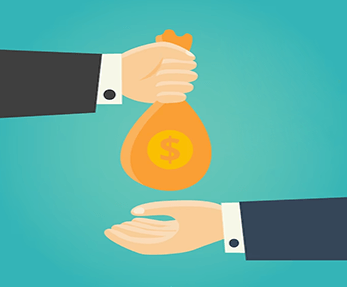 A personal loan is a type of loan that individuals can borrow from a bank, credit union, or online lender. It is often an unsecured loan, which means it doesn’t require collateral like a car or house.
A personal loan is a type of loan that individuals can borrow from a bank, credit union, or online lender. It is often an unsecured loan, which means it doesn’t require collateral like a car or house.
People take out personal loans to cover various personal expenses or financial needs. These can include paying for unexpected medical bills, home repairs, consolidating high-interest debts, funding a wedding or vacation, or covering educational expenses.
When applying for a personal loan, the borrower typically needs to provide information about their income, credit history, and other financial details. The lender evaluates this information to determine if the borrower qualifies for the loan and at what interest rate.
If approved, the borrower receives a lump sum of money from the lender, which is then repaid in installments over a fixed period of time. Each installment includes both the principal amount borrowed and interest charges.
Home Loan
 A home loan, also known as a mortgage, is a type of loan specifically designed for purchasing or refinancing a home. It is typically obtained from a bank, credit union, or mortgage lender.
A home loan, also known as a mortgage, is a type of loan specifically designed for purchasing or refinancing a home. It is typically obtained from a bank, credit union, or mortgage lender.
Home loans enable individuals or families to buy a house without having to pay the full purchase price upfront. The lender provides the borrower with a specific amount of money, which is secured by the property itself. This means that if the borrower fails to repay the loan, the lender can take possession of the property through a process called foreclosure.
When applying for a home loan, borrowers are required to provide various financial documents, such as income proof, employment history, credit score, and details about the property being purchased. The lender evaluates this information to determine the borrower’s eligibility and sets the terms of the loan, including the interest rate, loan duration, and monthly repayment amount.
Home loans generally have a long repayment period, often spanning 15 to 30 years. The borrower makes regular monthly payments, which include both the principal amount borrowed and the interest charged by the lender. As the loan is repaid over time, the borrower builds equity in the property.
Interest rates on home loans can be fixed or variable. Fixed rates remain the same throughout the loan term, providing stability and predictable payments. Variable rates may fluctuate based on changes in the market, potentially affecting monthly payments.
Gold Loan
 A gold loan is a type of secured loan where individuals can borrow money by using their gold jewelry, coins, or other gold assets as collateral. It is a common form of financing provided by banks, non-banking financial companies (NBFCs), and other financial institutions.
A gold loan is a type of secured loan where individuals can borrow money by using their gold jewelry, coins, or other gold assets as collateral. It is a common form of financing provided by banks, non-banking financial companies (NBFCs), and other financial institutions.
To obtain a gold loan, the borrower pledges their gold items as security with the lender. The lender assesses the value of the gold and offers a loan amount based on a certain percentage of the gold’s market value. This percentage, known as the loan-to-value ratio, can vary among lenders.
The process of obtaining a gold loan is typically straightforward and quick. The borrower submits their gold items to the lender, who appraises the gold and determines its value. Upon agreement, the loan amount is disbursed to the borrower, usually in the form of cash or credit to their bank account.
Repayment terms for gold loans vary depending on the lender and the borrower’s preferences. Generally, the loan is repaid through regular installments, including principal and interest, over a specified period. If the borrower fails to repay the loan, the lender has the right to sell the pledged gold to recover the outstanding amount.
Auto Loan
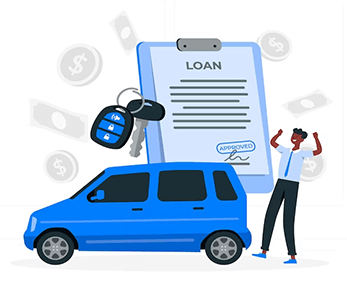 An auto loan, also known as a car loan or vehicle loan, is a type of loan specifically designed for purchasing a car, truck, or other vehicle. It is commonly provided by banks, credit unions, and auto finance companies.
An auto loan, also known as a car loan or vehicle loan, is a type of loan specifically designed for purchasing a car, truck, or other vehicle. It is commonly provided by banks, credit unions, and auto finance companies.
When individuals want to buy a vehicle but don’t have enough money to pay for it upfront, they can apply for an auto loan. The lender evaluates the borrower’s financial information, credit history, and the vehicle’s value to determine the loan amount, interest rate, and repayment terms.
Auto loans are usually secured loans, meaning the vehicle itself serves as collateral. If the borrower fails to repay the loan, the lender has the right to repossess and sell the vehicle to recover the outstanding amount.
The repayment of auto loans typically involves monthly installments over a predetermined period, which can range from a few years to several years. The monthly payments include both the principal amount borrowed and the interest charged by the lender.
Two Wheeler Loan
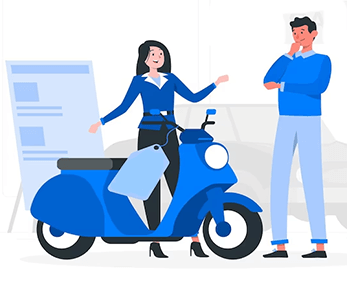 A two-wheeler loan, also known as a bike loan or motorcycle loan, is a type of loan specifically designed for purchasing a two-wheeler vehicle such as a scooter or motorcycle. It is commonly offered by banks, financial institutions, and two-wheeler dealerships.
A two-wheeler loan, also known as a bike loan or motorcycle loan, is a type of loan specifically designed for purchasing a two-wheeler vehicle such as a scooter or motorcycle. It is commonly offered by banks, financial institutions, and two-wheeler dealerships.
When individuals wish to buy a two-wheeler but lack the funds to pay for it upfront, they can opt for a two-wheeler loan. The lender assesses the borrower’s financial information, credit history, and the vehicle’s cost to determine the loan amount, interest rate, and repayment terms.
Two-wheeler loans are often secured loans, with the vehicle itself serving as collateral. This means that if the borrower fails to repay the loan, the lender has the right to repossess and sell the two-wheeler to recover the outstanding amount.
Repayment of two-wheeler loans typically involves monthly installments over a fixed period, usually ranging from a few months to a few years. The monthly payments consist of both the principal amount borrowed and the interest charged by the lender.
Business Loan
 A business loan is a type of loan specifically designed to provide financial assistance to businesses for various purposes, such as starting a new business, expanding operations, purchasing equipment, managing cash flow, or investing in new projects. Business loans are typically offered by banks, financial institutions, and online lenders.
A business loan is a type of loan specifically designed to provide financial assistance to businesses for various purposes, such as starting a new business, expanding operations, purchasing equipment, managing cash flow, or investing in new projects. Business loans are typically offered by banks, financial institutions, and online lenders.
Business loans can be secured or unsecured. Secured loans require collateral, such as business assets or personal guarantees, which the lender can claim if the borrower defaults on the loan. Unsecured loans do not require collateral but often have higher interest rates and stricter eligibility criteria.
When applying for a business loan, the borrower needs to provide detailed information about the business, including financial statements, business plans, cash flow projections, and sometimes personal financial information. The lender evaluates this information to assess the creditworthiness of the business and determine the loan amount, interest rate, and repayment terms.
Education Loan
 An education loan, also known as a student loan, is a type of loan specifically designed to help individuals finance their educational expenses. It allows students or their parents to borrow money to cover the costs associated with education, including tuition fees, books, supplies, accommodation, and living expenses.
An education loan, also known as a student loan, is a type of loan specifically designed to help individuals finance their educational expenses. It allows students or their parents to borrow money to cover the costs associated with education, including tuition fees, books, supplies, accommodation, and living expenses.
Education loans are typically offered by banks, financial institutions, and government-sponsored programs. They aim to support students in pursuing higher education, such as undergraduate or graduate degrees, vocational training, or professional courses.
When applying for an education loan, the borrower needs to provide information about the educational institution, course of study, estimated expenses, and their own financial details. The lender evaluates this information to determine the loan amount, interest rate, and repayment terms.
Loan Against Property

A loan against property, also known as a mortgage loan or property-backed loan, is a type of loan where individuals can borrow money by pledging their property as collateral. It allows property owners to leverage the value of their property to secure funds for various purposes.
When individuals require a substantial amount of money and own a property, they can apply for a loan against the property. The lender assesses the value of the property, along with the borrower’s financial information, credit history, and repayment capacity, to determine the loan amount, interest rate, and repayment terms.
The property being pledged can be residential, commercial, or even vacant land. It serves as security for the loan, and if the borrower fails to repay the loan, the lender has the right to sell the property to recover the outstanding amount.
Home Loan Balance Transfer
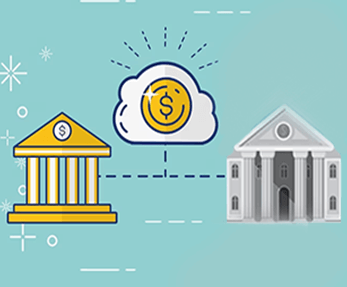 Home loan balance transfer, also known as refinancing or loan takeover, is a process where a borrower transfers their existing home loan from one lender to another. It involves transferring the outstanding loan amount from the current lender to a new lender who offers better terms, such as lower interest rates, improved repayment options, or additional benefits.
Home loan balance transfer, also known as refinancing or loan takeover, is a process where a borrower transfers their existing home loan from one lender to another. It involves transferring the outstanding loan amount from the current lender to a new lender who offers better terms, such as lower interest rates, improved repayment options, or additional benefits.
When individuals find that their current home loan is not meeting their needs or they discover a better offer from another lender, they can choose to opt for a home loan balance transfer. The new lender pays off the outstanding loan amount to the existing lender, and the borrower starts repaying the loan to the new lender under revised terms and conditions.
The primary motivation behind a home loan balance transfer is usually to save on interest costs. If the new lender offers a lower interest rate than the current lender, borrowers can reduce their monthly EMI (equated monthly installment) payments and save money over the long term. However, it’s important to consider any associated charges and fees involved in the balance transfer process.
Short Term Loan
 A short-term loan, also known as a payday loan or cash advance, is a type of loan designed to provide borrowers with quick access to a small amount of money for a short period. These loans are typically repaid within a few weeks or months, rather than over an extended period like traditional loans.
A short-term loan, also known as a payday loan or cash advance, is a type of loan designed to provide borrowers with quick access to a small amount of money for a short period. These loans are typically repaid within a few weeks or months, rather than over an extended period like traditional loans.
Short-term loans are often sought by individuals who need immediate funds to cover unexpected expenses, bridge temporary gaps in their finances, or address emergencies. The application process for short-term loans is usually quick and straightforward, with minimal documentation required.
The loan amount for a short-term loan is typically smaller compared to long-term loans, and it is based on the borrower’s income, credit history, and repayment capacity. Lenders may charge higher interest rates and fees for short-term loans due to the shorter repayment period and perceived higher risk.
Line Of Credit
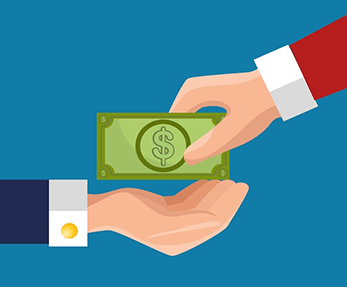
A line of credit is a flexible financial arrangement that allows individuals or businesses to access funds up to a predetermined credit limit. It functions like a revolving credit facility, where borrowers can withdraw funds as needed and only pay interest on the amount they have borrowed.
When individuals or businesses have a line of credit, they can draw funds from the available credit whenever they require cash flow or need to cover expenses. They can choose the amount they need to borrow and repay it over time.
The credit limit for a line of credit is determined based on factors such as the borrower’s creditworthiness, income, and collateral (if required). It represents the maximum amount that can be borrowed under the line of credit.
Buy Now Pay Later
 Buy Now Pay Later (BNPL) is a payment option that allows individuals to make purchases and defer payments for a later date. It is a form of short-term financing where customers can buy products or services immediately and repay the amount over time, typically in installments.
Buy Now Pay Later (BNPL) is a payment option that allows individuals to make purchases and defer payments for a later date. It is a form of short-term financing where customers can buy products or services immediately and repay the amount over time, typically in installments.
When using a Buy Now Pay Later service, individuals can select the desired items and choose the BNPL option at checkout. The payment is then split into multiple installments, usually weekly or monthly, depending on the terms offered by the provider.
BNPL services may require customers to provide certain information, such as their name, address, and payment details, to complete the purchase. Some BNPL providers perform credit checks, while others may not require a credit check or charge interest on the installment payments.
Loan FAQs
- Mortgages: Loans used to purchase a home.
- Auto loans: Loans used to purchase a car.
- Personal loans: Loans used for general expenses.
- Student loans: Loans used to pay for college tuition and fees.
- Credit cards: Loans that allow you to borrow money up to a certain limit and repay it over time.
- The possibility of defaulting on the loan, which can damage your credit score and make it difficult to get approved for future loans.
- The possibility of paying more interest than you originally borrowed, due to high-interest rates or fees.
- The possibility of having to make monthly payments that are unaffordable, which can lead to financial hardship.
- The amount of money you need to borrow.
- The purpose of the loan.
- The interest rate.
- The repayment terms.
- The fees associated with the loan.
- It is important to compare different loan options before you choose one so that you can get the best possible deal.
- Make sure you understand the terms and conditions of the loan.
- Make all of your payments on time.
- Keep track of your spending so that you do not overextend yourself.
- Consider consolidating your loans into one loan with a lower interest rate.
